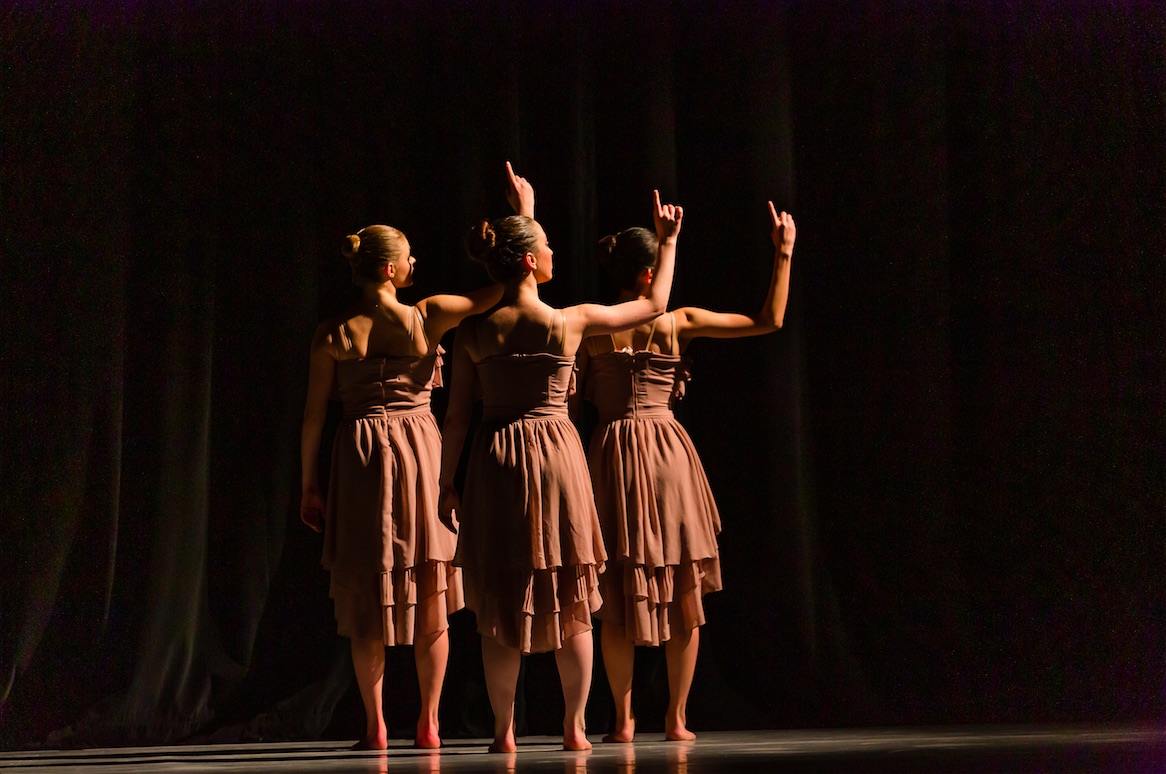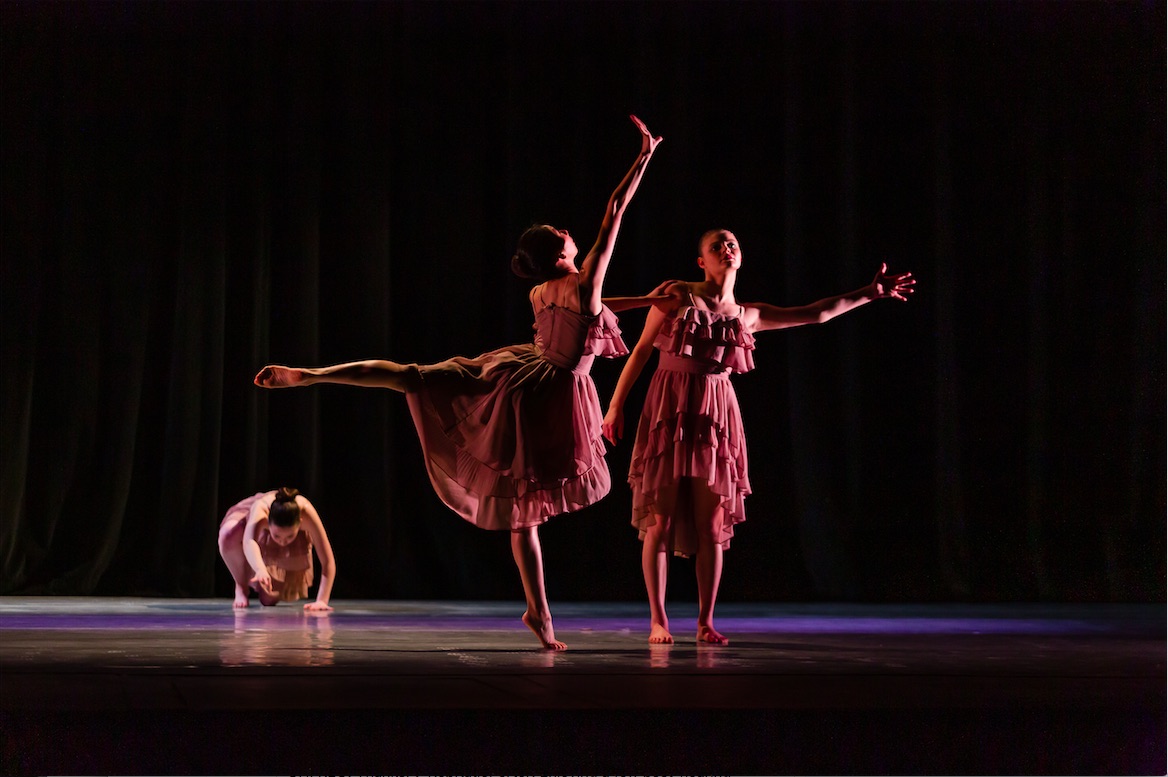Dance Has A Moment: ORU Dance Awarded With Gala Selection
 When it comes to an original dance work from ORU being awarded recognition, it's about
time. Literally. The work, entitled "Moment after minute… hevel," was recently selected
as a gala presentation in a festival among other dance programs from institutions
of higher learning.
When it comes to an original dance work from ORU being awarded recognition, it's about
time. Literally. The work, entitled "Moment after minute… hevel," was recently selected
as a gala presentation in a festival among other dance programs from institutions
of higher learning.
"When I created the work, I originally proposed that it would play with kairos and chronos time," said Christina Schneider, Director of Dance and Assistant Professor at Oral Roberts University. "The dancers are grappling with a sense of time, of losing time, like they don’t have control of time, but there’s also the concept of surrendering time and our lives to a greater story."
But perhaps we should wind the clock back just a bit to March, when faculty and student representatives from the ORU dance department traveled to the American College Dance Association's annual central region conference, held this year on the campus of Missouri State University. It was the team's seventh year to attend the four-day festival event.
"It’s a time when all these universities come together and share choreography and choreographic research, which is presented for blind adjudication," Schneider said. "The students also get to participate in course from different professors and guest artists."
In case you're stumbling over the meaning of "blind adjudication," Schneider is ready with a professorial explanation.
"There are four adjudicated concerts over the series of the conference," she said. "Universities bring two selections of choreography to present in these concerts. There are three adjudicators who are selected based on their knowledge in the field."
The adjudicators are renowned artists who have great familiarity with the discipline of dance. When judging, they receive no information other than the title of the work (i.e. the piece of choreography) and the title of its accompanying music. This means they don't know whether it was choreographed by a faculty member or a student or some combination.
Once the concerts are finished, the adjudicators hold a feedback session with the performers to deliver encouraging critique about what worked and what could be strengthened.
And then, after all that, they select up to ten pieces and crown them "best of the festival." Schneider's work, performed by then-juniors Elizabeth Tjia, Anna Berg, and Joy Baumberger, was one of these gala selections.
 "The title comes from Ecclesiastes, the sense of the vapor, that it’s all meaningless,"
said Schneider. "It’s not a narrative necessarily, it's more abstract. It can make
the audience feel anxious or that they come into rest at the end of it, because the
dancers breathe deeply as they surrender. I tell audiences to engage with dance as
if they’re participating in a worship experience and letting the different moods,
thoughts, and feelings wash over them. If you’re trying to figure out what it means,
it’s not about figuring out the story but letting it wash over you."
"The title comes from Ecclesiastes, the sense of the vapor, that it’s all meaningless,"
said Schneider. "It’s not a narrative necessarily, it's more abstract. It can make
the audience feel anxious or that they come into rest at the end of it, because the
dancers breathe deeply as they surrender. I tell audiences to engage with dance as
if they’re participating in a worship experience and letting the different moods,
thoughts, and feelings wash over them. If you’re trying to figure out what it means,
it’s not about figuring out the story but letting it wash over you."
The recognition was especially meaningful for the ORU dance department because of the circumstances under which Schneider created the work.
"I choreographed it a few years ago, during the time when Amy McIntosh, our Director of Dance passed away, and I felt like I didn’t know what happened when I created it. I wanted to go back and look at it again, because it was created in a unique time. It came from a more emotional place.
McIntosh, who founded the current dance program at ORU, was a friend of Schneider.
"I gave myself specific instructions on what I was going to do," said Schneider about the initial creation of the work. "I knew my dear friend was sick at the time but I didn’t believe she was going to die. In the process of making it she passed away. And I realized very quickly I was choreographing something that was about time but also about me processing time and processing it with her and another one of my good friends.
"I often choreograph from a cognitive place. My heart’s in it but it all filters through my analytical mind first; but I felt this time that it was very different. it poured out of this other space I wasn’t used to choreographing from. It took on a different form from what I thought it would be. But when you’re bent you can see things from a new perspective, so I let it bend me and see what I could see."
Earlier this year, the time felt right for Schneider to revisit the piece.
"I was grateful for the opportunity to show the students that it can be successful to go back and look at old work with new eyes," she said. "There’s fruit in that. I made this piece by giving myself limitations that go against the way I usually create. They were difficult for me. And I was grateful for the students to see there can be excellent fruit that comes from pushing yourself in new ways and with new limitations to the way you typically work as an artist."
Ultimately, though, Schneider's praise is reserved for her trio of performers and the rest of the ORU dance department, especially as they're building upon the foundation that McIntosh helped to lay.
"This is a first for ORU," she said. "I’m really proud of them."

